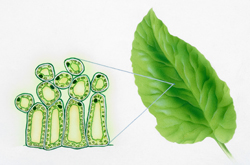Exploiting chloroplast signalling for plant growth
Plants have the capacity to produce energy for their functions through the process of photosynthesis, whereby they capture light from the Sun in specialised organelles known as chloroplasts. Understanding the signalling pathways that govern choloroplast metabolism and function could be exploited to improve yield and stress robustness of crops. By working with both algae and higher plants, the EU-funded 'Chloroplast signals' (COSI) project aimed to delineate these regulatory pathways and how they are coordinated with the overall metabolic network of the cell. For this purpose, the consortium worked on different aspects of photosynthesis and on environmentally triggered signalling pathways. The enzyme STN7 kinase was found to be essential for achieving fluent photosynthesis despite fluctuations in light intensity. Additionally, other important proteins for chloroplast communication with the nucleus and for chloroplastic gene expression were identified. These paths could be explored for manipulating the photosynthetic process to improve plant acclimation to environmental changes. In response to environmental triggers, plants signal down the calcium-dependent pathway. Pathway targets include components of photosynthesis as well as metabolite transporters in chloroplasts. As a result, calcium-dependent signalling was found to be implicated in the regulation of chloroplast metabolism and the coordination of cellular and chloroplast metabolism. In marine algae known as diatoms, researchers unravelled a novel cross-talk between chloroplasts and mitochondria. This piece of information showed that these species of algae, unlike plants, did not rely solely on sunlight energy to survive. Furthermore, scientists explored the metabolic outcome of stress signalling in plants. They unveiled an accumulation of poly (ADP-ribose) polymerases (PARP) and anthocyanin, which was associated with an enhanced growth of the plants under stress conditions. Additional mechanisms that confer photo-protection or cause light-induced stress in plants were identified. Taken together, the findings of the COSI study portray a significant picture of the mechanisms that govern chloroplast function and metabolism. Biotechnological exploitation of these targets could lead to plant species that can adapt more efficiently to an ever-changing environment.







